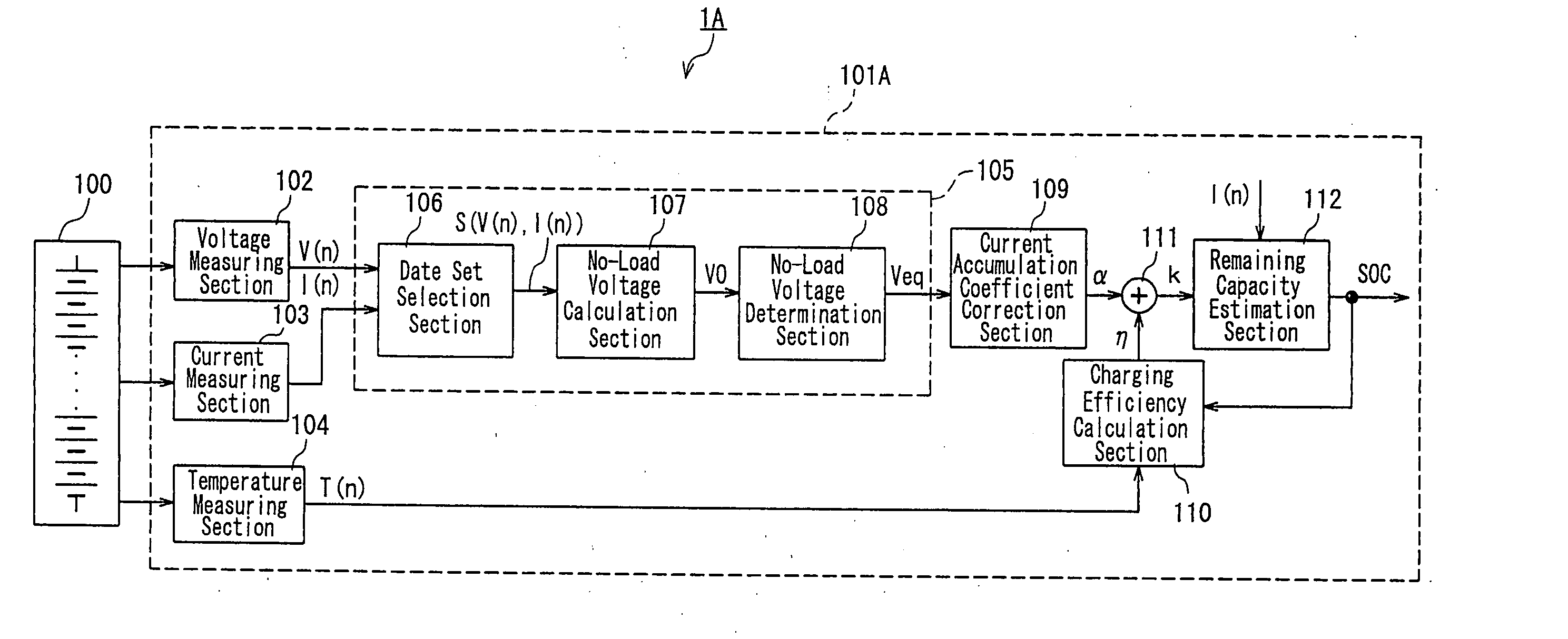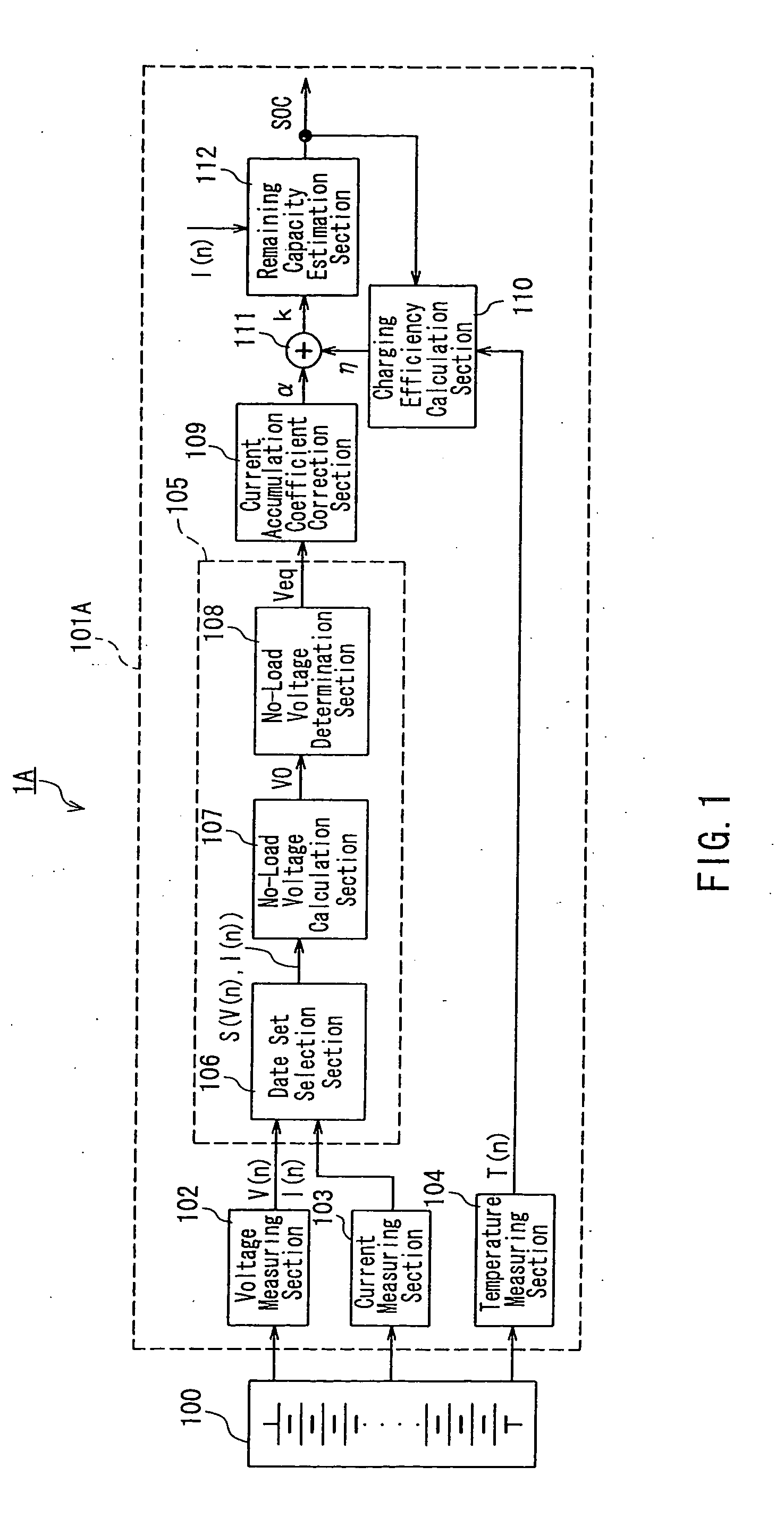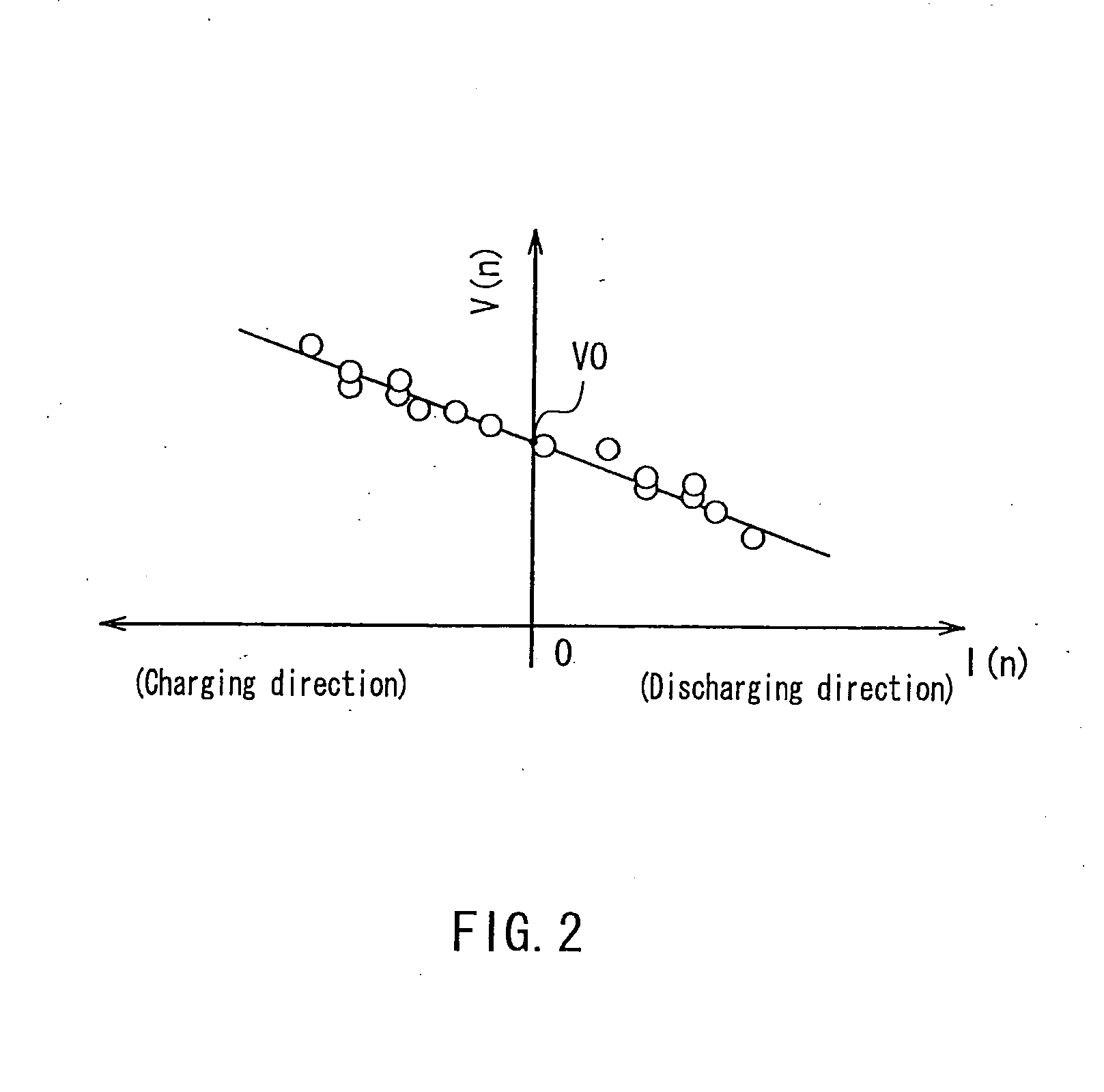Method and device for estimating remaining capacity of secondary cell battery pack system and electric vehicle
a secondary cell battery pack and remaining capacity technology, applied in secondary cell servicing/maintenance, batteries, instruments, etc., can solve the problems of secondary battery not being able to supply electric power, secondary battery cannot find a suitable charging efficiency, and cannot calculate self-discharge amount during that time, so as to achieve the effect of reducing the deviation of the soc estimated value and the soc true value, high accuracy and reducing the charge efficiency
- Summary
- Abstract
- Description
- Claims
- Application Information
AI Technical Summary
Benefits of technology
Problems solved by technology
Method used
Image
Examples
embodiment 1
[0084] (Embodiment 1)
[0085]FIG. 1 is a block diagram showing an exemplary configuration of a battery pack system 1A according to Embodiment 1 of the present invention. In FIG. 1, the battery pack system 1A is composed of a battery pack 100 and a battery ECU 101A including an apparatus for estimating a remaining capacity according to the present invention as a part of a microcomputer system.
[0086] The battery pack 100 has a configuration in which a plurality of battery modules (cells), each having a plurality of cells (e.g., nickel-metal hydride batteries) electrically connected in series, are electrically connected in series, so as to obtain a predetermined output, generally when mounted on an HEV, etc.
[0087] In the battery ECU 101A, reference numeral 102 denotes a voltage measuring section for measuring a terminal voltage of the secondary battery 100 detected by a voltage sensor (not shown) at a predetermined sampling period as voltage data V(n), 103 denotes a current measuring s...
embodiment 2
[0099] Embodiment 2
[0100]FIG. 4 is a block diagram showing an exemplary configuration of a battery pack system according to Embodiment 2 of the present invention. In FIG. 4, the same components as those shown in FIG. 1 representing the configuration of Embodiment 1 are denoted with the same reference numerals as those therein, and the description thereof will be omitted here.
[0101] In the present embodiment, an estimated electromotive force calculation section 113 and a subtractor 114 are added to Embodiment 1 to configure a battery ECU 101B.
[0102] The estimated electromotive force calculation section 113 obtains an estimated electromotive force Ves from a currently estimated SOC. The subtractor 114 subtracts the estimated electromotive force Ves, which is calculated in the estimated electromotive force calculation section 113, from the electromotive force Veq, which is calculated in the electromotive force calculation section 105, and outputs an electromotive force deviation Vd t...
embodiment 3
[0108] Embodiment 3
[0109]FIG. 6 is a block diagram showing an exemplary configuration of a battery pack system 1C according to Embodiment 3 of the present invention. In FIG. 6, the same components as those shown in FIG. 4 representing the configuration of Embodiment 2 are denoted with the same reference numerals as those therein, and the description thereof will be omitted here.
[0110] In the present embodiment, a varied capacity calculation section 115, a first computation section 116, a polarization voltage calculation section 117, and a subtractor 118 are added to the electromotive force calculation section 105 of Embodiment 2 to obtain an electromotive force calculation section 105′, whereby a battery ECU 101C is configured.
[0111] The varied capacity calculation section 115 obtains a variation ΔQ of the accumulated capacity during a past predetermined period (e.g., one minute) from the current data I(n).
[0112] The first computation section 116 functions as a low-pass filter (L...
PUM
| Property | Measurement | Unit |
|---|---|---|
| charging/discharging currents | aaaaa | aaaaa |
| terminal voltage | aaaaa | aaaaa |
| electromotive force | aaaaa | aaaaa |
Abstract
Description
Claims
Application Information
 Login to View More
Login to View More - R&D
- Intellectual Property
- Life Sciences
- Materials
- Tech Scout
- Unparalleled Data Quality
- Higher Quality Content
- 60% Fewer Hallucinations
Browse by: Latest US Patents, China's latest patents, Technical Efficacy Thesaurus, Application Domain, Technology Topic, Popular Technical Reports.
© 2025 PatSnap. All rights reserved.Legal|Privacy policy|Modern Slavery Act Transparency Statement|Sitemap|About US| Contact US: help@patsnap.com



